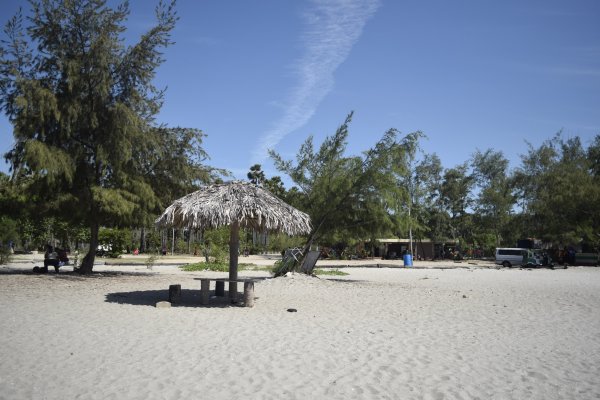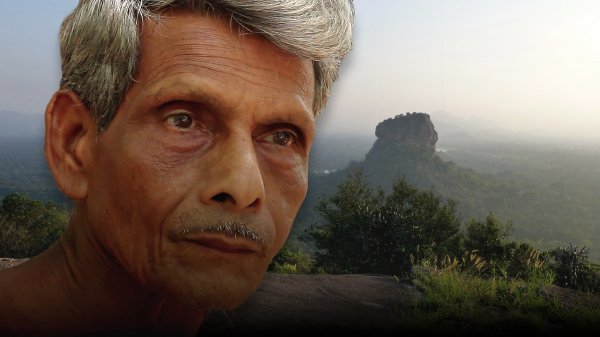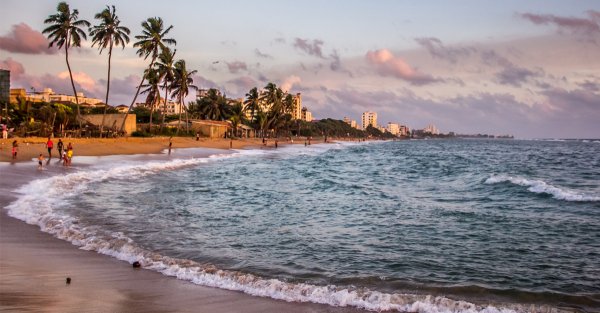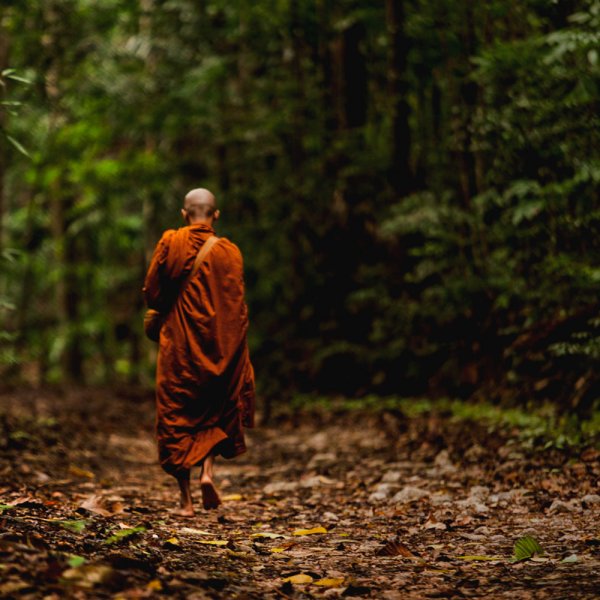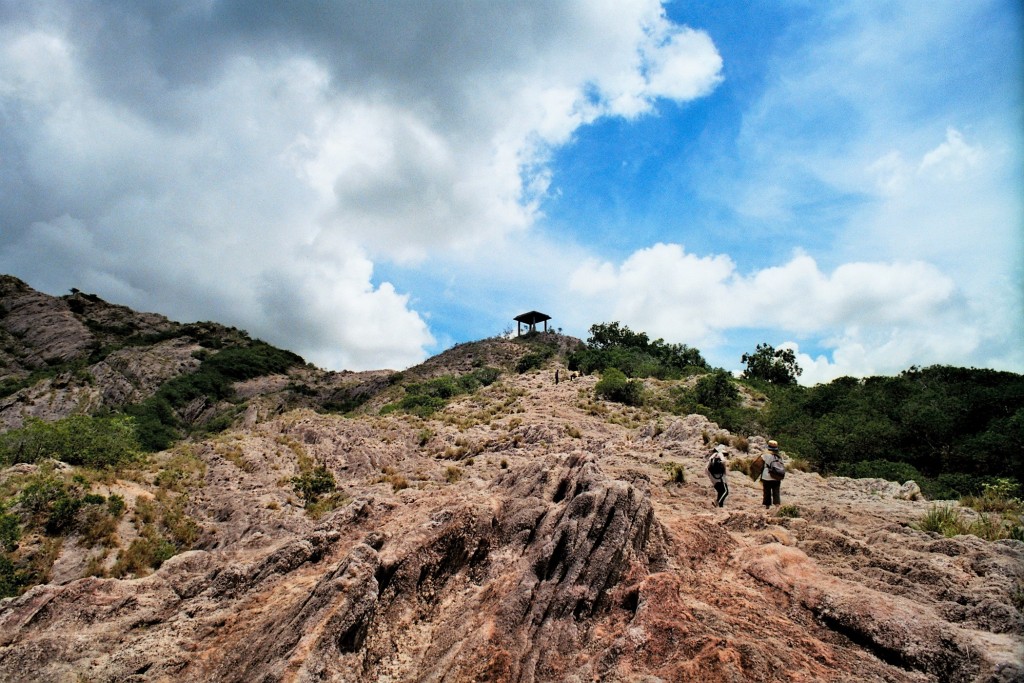
Famed as the largest ironwood forest in Asia, the Jaathika Namal Uyana, an ancient forest sanctuary close to Dambulla, leads to the rose quartz mountain range. The latter also claims to be the largest in Asia, a claim which is neither substantiated nor disputed. Despite this, mining at the rose quartz mountain range in Sri Lanka is illegal, and the quartz mined for commercial uses are from deposits found in countries like Brazil, Madagascar, India, and South Africa.
Man-made Ironwood Forests
-

The mountain overlooks the ironwood forests, lakes, and paddy cultivation in the distance. Photo courtesy amazinglanka.com
Nestled deep in the massive na forest, the range comprises of seven mountains. The forest is said to be the oldest and largest man-made forest in Asia, with the ironwood trees being planted by monarchs who reigned from the time of King Devanampiyatissa. It is said that the Na forest was a place of sanctuary for even the worst of criminals, and that they were untouchable by law when they sought refuge there. However, as penance to their crimes, they had to plant ironwood trees. The result over the span of 2000 or more years is what can be seen now—a massive, virginal forest of Sri Lanka’s endemic trees.
The protected area covers over 2500 acres, and the rose quartz mountain range enclosed in it is said to be over 500 million years old. Falling under the purview of the Department of Wildlife Conservation, the Jaathika Namal Uyana was declared a National Heritage Site in 2005.
The Crystal Mountains
-
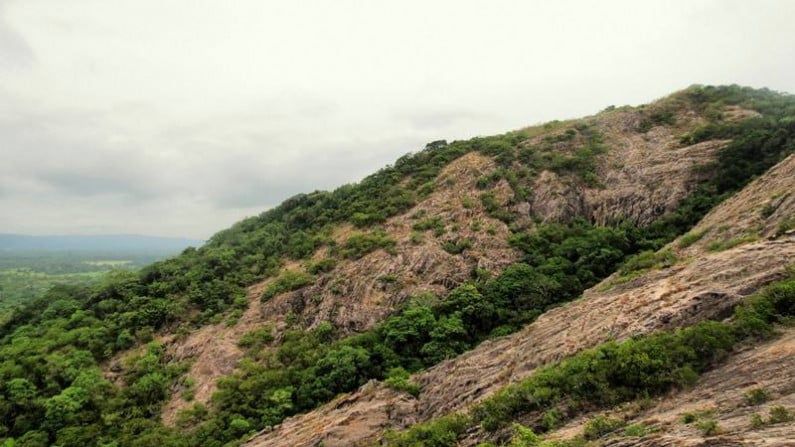
The not-so-slippery slope of the mountains. Photo courtesy amazinglanka.com
The mountain range is large, but not gargantuan—it is easy to scale. Being at the edge of the ironwood forest, and being surrounded by an area filled with trees, you get an uninterrupted view of greens and blues as there are plenty of lakes in the region.
Quartz crystals are quite common, and can be found around the world. What sets this deposit apart is that it is famed to be the largest rose quartz deposit in Asia. Given its protected status, mining the crystals are illegal and can lead to arrests if apprehended.
In terms of colour, the hue may vary from a pale pink to a much deeper and richer tone. However, the surface area of the mountain range is more of a dusty gray and a washed out, dirty pink. It is believed that the colour is much richer a few feet underneath the top layer.
Dr. N.P Wijayananda, Chairman of the Geological Survey and Mines Bureau noted in a news report that the discolourations are natural, given the minerals’ exposure to direct sunlight, rains, and other elements.
History, Wildlife, and Other Significances
-
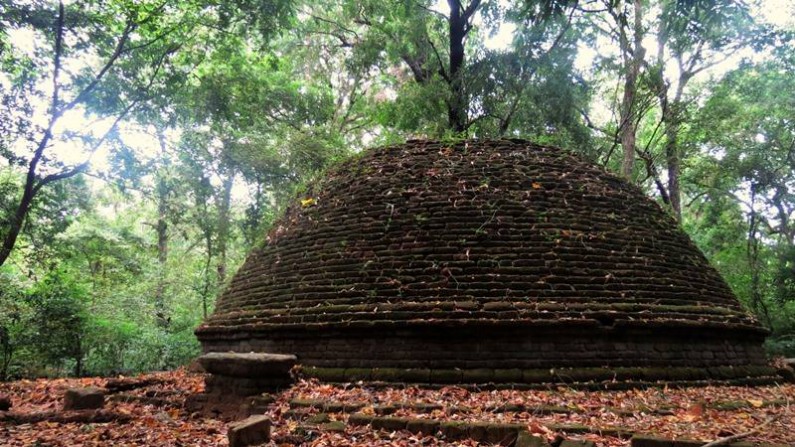
Open brick ruins of an ancient chaithya found at Namal Uyana. The forest was a space for meditative retreats centuries ago. Image courtesy amazinglanka.com
Other than providing a place of sanctuary for runaways from the law, the ironwood forest was also a place of retreat for monks. In 1991, Venerable Wanavasi Rahula Thera constructed a tree-house for himself before building a simple hut within the forest premises, and then took it upon himself to protect it. The monk is now widely recognised as the guardian of the area, and has helped reduce both illegal mining and felling. When he first retreated to the forest, he was unaware of the historical ruins in the area. The ruins of an ancient monastery patronised by King Devanampiyatissa and extending to the reign of King Dappula V during the 10th century AD, have been found since then. Granite foundations, steps, moonstones, and the remains of a dagoba provides necessary archaeological proof to date the place.
In terms of biodiversity, the forest is home to over a hundred varieties of tropical plants, of which approximately 80 are herbal. Reports state that there are over 20 bird species, and large mammals including deer, elephants, and leopards.
Situated about 15kms from Dambulla, it’s reachable from the Kalawewa Road to Andiyagala, or from the Dambulla-Kekirawa Road. The whole excursion would take a couple of hours at most, and is relatively easy. Dambulla itself is approximately three hours from Colombo, and has plenty of options for accommodation: from eco villas to popular hotel chains.
The forest and mountains are popular, but not overrun with tourists
like at Sigiriya and Pidurangala, two of the main sights in Dambulla. Most of its visitors are locals, with the majority of them being senior pilgrims making their way up dusty crystal pathways to pay homage to the Buddha statue perched on top.
Cover image: rohan tw


